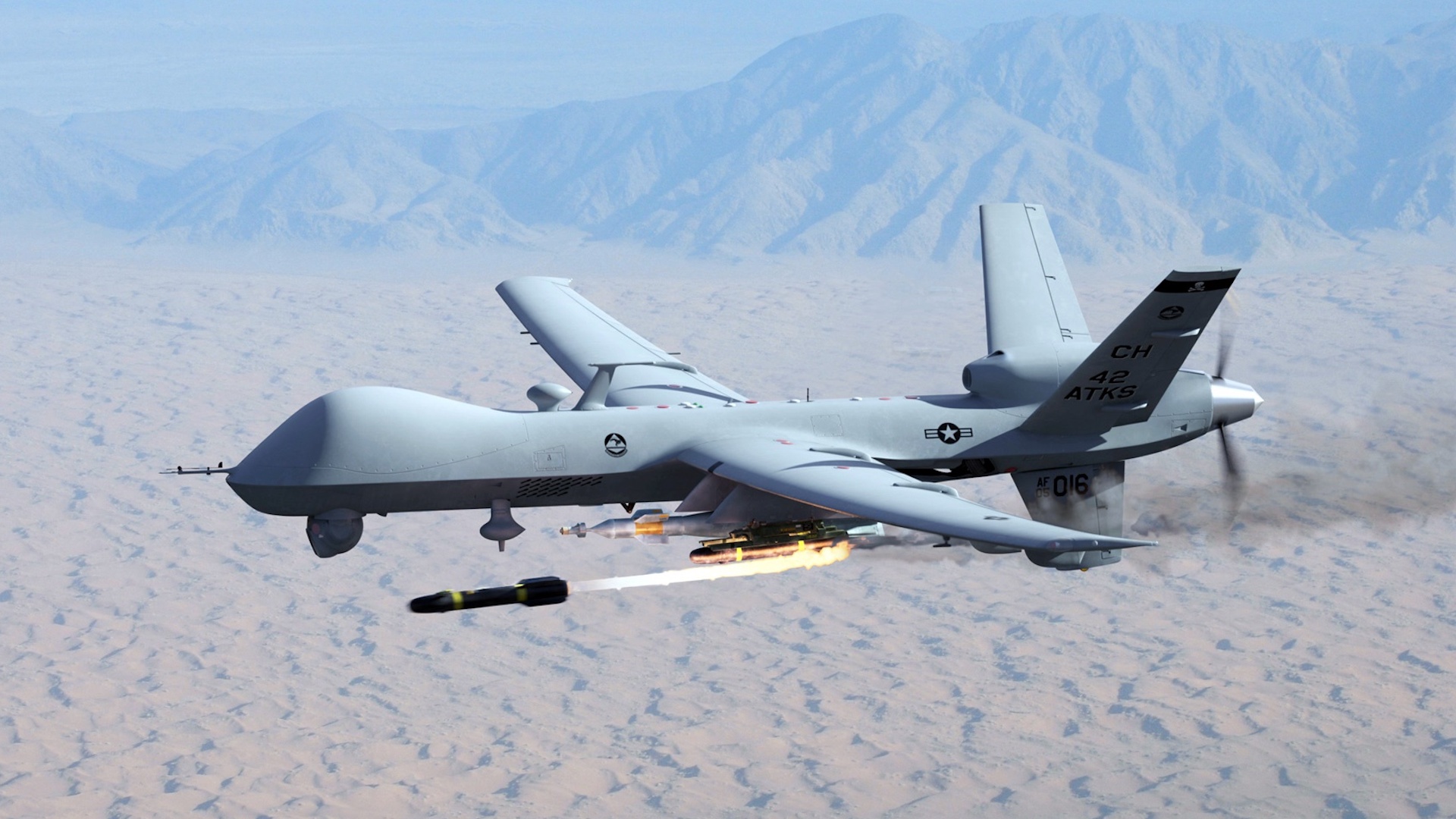

Did the United States deploy a secretive missile that’s basically an anvil covered in swords to target a vehicle in an airstrike in Yemen on Monday? All signs point to: well, probably.
Turkish state-run news network Andalou Agency reported, citing a local Yemeni official, that three “suspected al-Qaeda militants” were killed in a U.S. drone strike in the Wadi Ubaidah district of Yemen’s Marib province.
Based on photos of the scene of the strike obtained by Al Aan TV, an Arab-language TV network based in Dubai, the target vehicle was shredded from the roof in rather than destroyed outright in an explosion — a telltale sign of a strike involving the U.S. government’s secret AGM-114 R9X Hellfire missile.
As Task & Purpose has previously reported, the R9X variant of the Hellfire features a kinetic warhead rather than an explosive payload, releasing a halo of six razor-sharp blades upon impact to eviscerate a target with greater precision than the large explosion that comes from its more conventional cousins.
First publicized by the Wall Street Journal in 2019 and colloquially known as the “flying Ginsu” or “ninja bomb,” the R9X was purportedly the result of collaboration between the Defense Department and Central Intelligence Agency with the intention of reducing the potential for civilian casualties that might accompany a traditional Hellfire strike.
Subscribe to Task & Purpose Today. Get the latest military news, entertainment, and gear in your inbox daily.
Indeed, the R9X appears to have become the U.S. government’s preferred method of precision strikes. Indeed, the CIA used the R9X to eliminate Al Qaeda leader Ayman al-Zawahiri in a packed neighborhood in Kabul, Afghanistan this past August, and purported R9X strikes involving alleged terrorism trainers and organizers have been documented across Syria in the years since the missile’s existence was first made public.
It’s unclear whether the CIA or a Joint Special Operations Command task force, among others, was responsible for the strike. U.S. Central Command did not respond to request for comment from Task & Purpose, telling Stars & Stripes that the combatant command had “no operational reporting at the time of this incident in Yemen.”

The U.S. military has enjoyed fluctuating involvement in Yemen since the start of the Houthi insurgency there in 2014. While U.S. involvement has remained primarily focused on the (controversial) provisioning of weapons and logistical support to Saudi Arabia, U.S. President Joe Biden confirmed last year that “a small number” of U.S. military personnel remain deployed to Yemen “to conduct operations against [al-Qaeda] in the Arabian Peninsula and ISIS.”
“The United States military continues to work closely with the Republic of Yemen government and regional partner forces to degrade the terrorist threat posed by those groups,” Biden said in a letter to then-Speaker of the House Nancy Pelosi in June.
Indeed, the strike in Yemen is yet another reminder of the lingering reach of America’s Global War on Terrorism despite the end of the 20-year “forever war” in Afghanistan in August 2021. News of the strike came less than a week after U.S. Africa Command announced that U.S. forces in Somalia “conducted a successful counterterrorism operation” against Islamic Group leader Bilal al-Sudani there, an operation that came on the tail end of twin air strikes that killed more than 30 al-Shabaah fighters there.
The Global War on Terrorism may no longer have a medal associated with it, but if the recent purported deployment of the R9X in Yemen is any indication, it will almost certainly be represented by something new: a missile full of swords, hurtling through the sky, heralding certain doom.
The latest on Task & Purpose
- The Army’s futuristic new goggles actually make soldiers less lethal, Pentagon weapons tester says
- Marines outwitted an AI security camera by hiding in a cardboard box and pretending to be trees
- Watch a German Leopard 2 tank carry a beer and not spill a drop
- The Air Force is moving forward with a replacement for its decades-old long-range radar
- India rolls out mortar-toting camo camels for military parade
Want to write for Task & Purpose? Click here.
